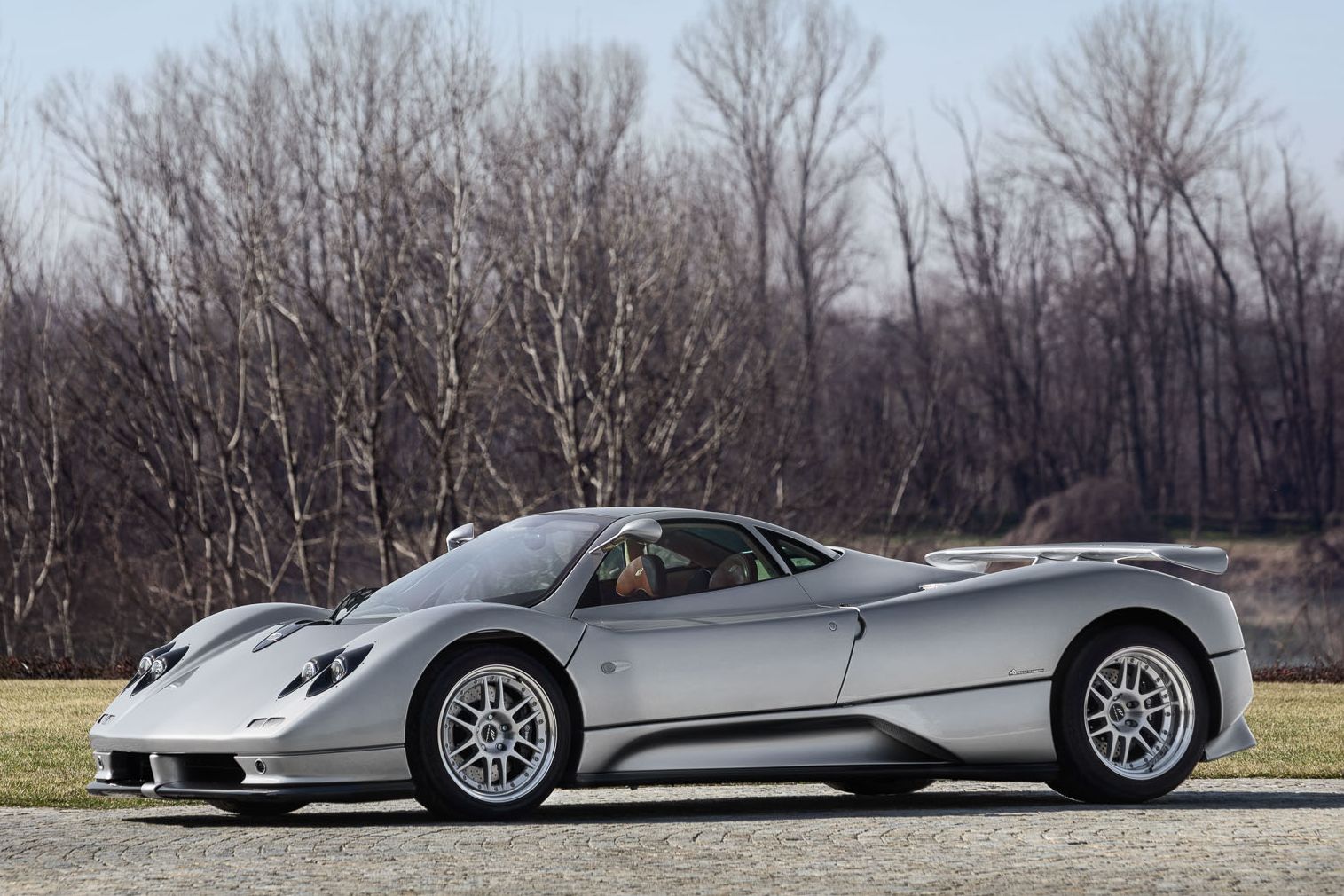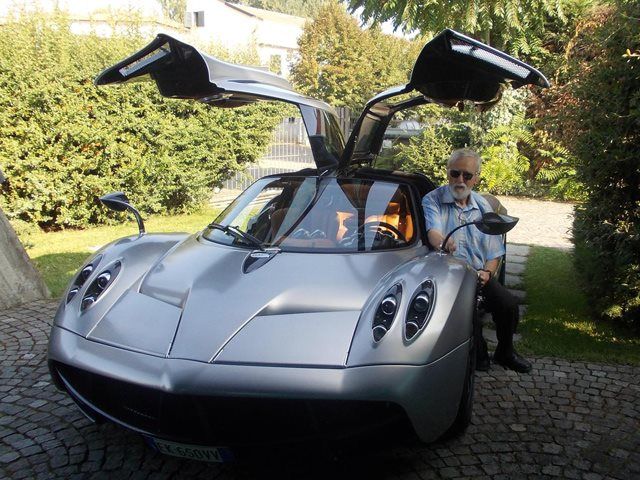
When Pagani extended our friend Hank Guerci-Taveni an invitation to its headquarters in Modena, it was an offer he simply couldn't refuse. Here's his story, sent exclusively to CarBuzz: Long before boarding my flight to Italy, I had already read the reviews of Pagani's new Huayra, marveling at its advanced aerodynamics, exquisite craftsmanship and screaming 6.0-liter twin-turbo V12, and fully digested its mind-boggling specs: 730 horsepower, 737 lb-ft of torque, 0-60 in 3.3 seconds and a 230mph top speed.
Seeing the magnificent hypercar up close, however, promised to take my love affair with the Huayra to new levels of lust. My first contact with Pagani was with PR man Luca Venturi, who invited me to the workshop for a chat with some of the crew. After a brief tete-a-tete with a roll-cage fitter, an assembler and a carbon fiber specialist, it was blindingly obvious how much these guys love their jobs. Half of the workforce, I later found out, have been with Pagani since day one. An inspection of the units currently in various stages of production followed, from the naked shell to the final product ready for delivery.
Each was being finished to customers' exact specifications, from the color of the interior, spoilers and rims to the spec of the sound system. Pictured is a finished Huayra that will soon be on its way to a customer in China, sporting a delicious deep green and carbon exterior and regrettable pink interior that aptly (and lamentably) demonstrates at least one way to ruin a million-dollar-car. The first Pagani car to be delivered to the USA was also at the factory, having passed endless comprehensive safety tests that tragically included the total destruction of a dozen or so models.
Horacio Pagani himself then invited me to his office. Polite, friendly, reserved, the man who has made his mark in Supercar Valley alongside the likes of Ferrari, Maserati and Lamborghini revealed how his journey started in Argentina where he was born to an Italian family. The E-type Jag was his dream car, and by 13 years old he had hand built his own motorbike. By 17 he had built a racing car that successfully competed in several races in Argentina. From there, moving to the birthplace of supercars was inevitable. Our two-hour-long chat extended from his personal and vested interest in his workforce to the latest issues facing exotic automakers.
I asked his opinion about producing a hybrid car, something all the big players are investing millions of dollars in developing. "We are observing new technology very carefully. Hybrid applications so far have been used on heavy passenger cars in order to lower their emissions in normal driving conditions. So far this technology was never considered for one of our vehicles, where every weight-saving effort would be nullified by the adoption of a hybrid powertrain package. However there may be a time when hybrid technologies offer significant advantages for even the lightest vehicles, at which point we would consider them."
Instead of investing in alternative powertrain solutions, Pagani has focused on improving existing technologies. The result is that his 12-cylinder cars produce no more than 326g/km of CO2, compared to the 612g/km of the Bugatti Veryon, and boast the lowest petrol consumption in their class. Environmental friendliness is all well and good, but nobody buys a Pagani for its green credentials. They buy one because of how it drives. Luca Venturi was the man to decipher the dashboard's instruments, drawing my attention to the small, aviation-style switch on the ceiling that is used to hit maximum speed when driving flat-out.
Hearing the engine purr while idling before quickly hitting 130 mph in third gear on the open road was a thrilling once-in-a-lifetime experience, but not one for the feint of heart. The opportunity to flick the switch didn't present itself, which is probably for the best given I had only brought one pair of trousers for the day. However if you were brave enough to drive a Pagani as it is meant to be driven, rest assured this is one safe car. Luca was proud to point out that no-one has ever been killed in a Pagani - even those involved in serious accidents - which is testament to the care and effort that goes into the production of each and every model handmade in the factory.
[NB: Since Hank's visit to the factory, a British owner was sadly killed at the wheel of his Pagani Zonda, which he was reportedly driving without a seatbelt. The belted passenger, however, walked away with only minor injuries. So while Pagani's safety record may be tarnished, the tragedy could not be blamed on the car itself so much as a terrible error in judgment on the driver's part.] In conclusion, I left the House that Horacio Built feeling part of a small, tight-knit group that few get to join. Those with the means, however, will undoubtedly find the Pagani experience to be unlike any other the industry has to offer - even in Supercar Valley.

